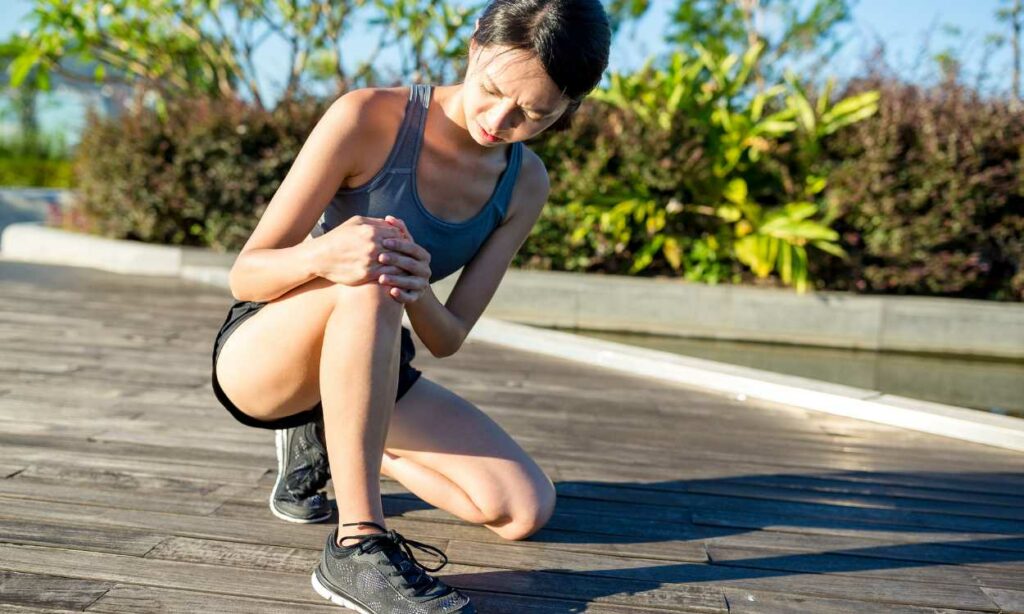You’re in your prime, buzzing with energy, ready to conquer the world, and then… knee pain hits. In your early 20s, knee pain is the last thing you expected. The good news? You’re not alone, and there are answers. Whether you’re a budding athlete, a weekend warrior, or just trying to navigate everyday life without that nagging pain, this guide is tailored for you. Delve in as we debunk myths, provide insights, and offer simple solutions to get you moving with ease once more.
Contents
Common Causes of Knee Pain in 20-Somethings
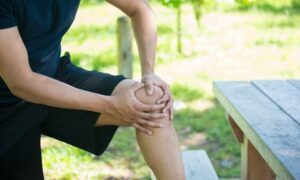 In your 20s, life is a whirlwind of activity. From fitness goals to new hobbies, there’s always something exciting around the corner. Yet, for some, this dynamic decade can also bring unexpected bouts of knee pain. Let’s dive into what might be triggering this discomfort:
In your 20s, life is a whirlwind of activity. From fitness goals to new hobbies, there’s always something exciting around the corner. Yet, for some, this dynamic decade can also bring unexpected bouts of knee pain. Let’s dive into what might be triggering this discomfort:
- Sports Injuries: Whether you’re playing weekend football or hitting the gym regularly, sports-related activities are a prime contributor to knee injuries. Sprains, strains, and more severe injuries like ACL tears can occur during high-impact or repetitive movements.
- Overuse: Sometimes, just the sheer intensity and frequency of physical activity without adequate rest can strain the knee. Overuse can lead to conditions like patellar tendonitis or runner’s knee.
- Sedentary Lifestyles: Ironically, while active lives can lead to knee issues, so can the opposite. Spending hours sitting, especially with poor posture or without taking breaks, can put pressure on the knees and lead to stiffness and pain.
- Improper Footwear: Shoes without the right support or those that don’t fit correctly can misalign your posture, exerting unnecessary stress on the knees.
- Underlying Medical Conditions: Issues like osteoarthritis can start to manifest in your 20s, especially if there’s a family history or if you’ve had prior joint injuries.
- Weight Management: Carrying excess weight can put additional stress on your knees, accelerating wear and tear on the joint.
Understanding the root of your knee discomfort is the first step toward effective management and relief. If any of these causes resonate with your experience, delving deeper into tailored remedies might be the key to restoring your mobility and zest for life.
How Daily Lifestyle Can Influence This Pain?
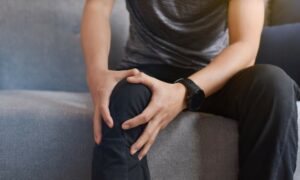 In today’s fast-paced world, certain lifestyle trends and habits of young adults in their 20s can inadvertently play a pivotal role in knee pain onset. The lifestyle choices we make, often without a second thought, can either be a boon or a bane for our knees. Let’s unpack some of the modern influences:
In today’s fast-paced world, certain lifestyle trends and habits of young adults in their 20s can inadvertently play a pivotal role in knee pain onset. The lifestyle choices we make, often without a second thought, can either be a boon or a bane for our knees. Let’s unpack some of the modern influences:
- Fashion Choices: While those high heels or tight-fitting shoes might be in vogue, they can alter the natural alignment of your foot, ankle, and knee. Over time, this misalignment can lead to increased stress and wear on the knee joint.
- Prolonged Sitting: Our increasingly digital lives mean more time in front of screens, often in sedentary positions. Sitting for extended periods, especially without ergonomic support, can tighten hip flexors and hamstrings, placing extra pressure on the knees.
- Workspace Ergonomics: If your chair or desk is too high or low, it might force your knees into uncomfortable angles, leading to strain over time.
- Inactive Lifestyle: Lack of regular movement and exercise can weaken the muscles supporting the knee, making the joint more prone to injury and pain.
- Tech Posture: Continually looking down at phones or laptops can not only strain your neck but also lead to posture imbalances that travel down to your knees.
- Fast-paced Workouts: Jumping into high-intensity workouts without proper form or adequate warm-ups can shock the knees, leading to sprains and other injuries.
- Urban Commute: Navigating stairs in subways, standing for long periods on buses or trains, and even the kind of terrain you walk on daily can impact knee health.
It’s essential to recognize these seemingly benign daily habits and understand their cumulative effect on knee health. By making small, conscious adjustments, young adults can go a long way in ensuring their knees remain strong and pain-free as they navigate their bustling lives.
Self-help Remedies to Combat Knee Pain in Your 20s
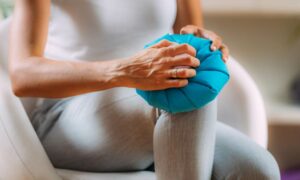 For many young adults in their 20s grappling with knee pain, seeking immediate relief is often the first priority. While it’s crucial to consult a medical professional for persistent or severe pain, there are several DIY remedies that can help manage and alleviate minor knee issues.
For many young adults in their 20s grappling with knee pain, seeking immediate relief is often the first priority. While it’s crucial to consult a medical professional for persistent or severe pain, there are several DIY remedies that can help manage and alleviate minor knee issues.
- RICE Protocol:
- Rest: When you first notice pain, it’s essential to give your knee a break. Avoid activities that exacerbate the discomfort and let your knee heal.
- Ice: Applying cold packs or wrapped ice can help reduce inflammation and numb the area, providing instant relief. Remember to never place ice directly on the skin; always wrap it in a cloth or use an ice pack.
- Compression: Wearing a knee support or bandage can help stabilize the joint and reduce swelling. Ensure it’s snug but not so tight that it cuts off circulation.
- Elevation: Raising the affected leg can aid in reducing swelling. Prop your leg up on pillows or cushions, ensuring your knee is above the level of your heart.
- Over-the-Counter Solutions: Non-prescription pain relievers like ibuprofen or naproxen can help manage pain and reduce inflammation. Topical pain-relief creams or gels can also be beneficial.
- Warmth after Icing: After the initial inflammation has reduced, applying a warm cloth or heating pad can relax and soothe the muscles around the knee.
- Gentle Exercises: Light stretches and exercises can help strengthen the knee and surrounding muscles. Start slowly, and if something causes more pain, stop immediately.
- Massage: Gentle massaging around the knee can stimulate blood flow and alleviate pain. Using oils like eucalyptus or peppermint can add an extra layer of relief.
- Weight Management: Keeping a check on body weight can reduce undue stress on the knees. Even a slight reduction in weight can make a significant difference in knee pressure.
- Anti-inflammatory Diet: Consuming foods rich in anti-inflammatory properties like turmeric, ginger, berries, and green tea can support joint health.
If knee discomfort persists or if there’s significant swelling or a noticeable change in knee shape, it’s vital to consult a healthcare professional.
Easy And Quick Exercises To Do
In the fast-paced world of today, sparing even a few minutes for exercise can seem like a luxury. However, for those grappling with knee pain, especially in their 20s, incorporating simple movements can make a world of difference. Here are some easy and quick exercises specifically designed to bolster knee strength, improve flexibility, and potentially alleviate discomfort:
Straight Leg Raises
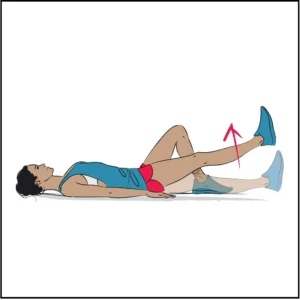
- How to: Lie on your back, one leg straight and the other bent at the knee. Tighten the quadriceps (thigh muscle) of the straight leg and lift it to the height of the opposite knee. Lower slowly.
Hamstring Curls
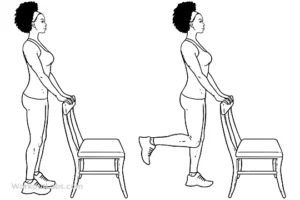
- How to: Stand and hold onto the back of a chair for support. Slowly bend one knee, bringing your heel towards your buttocks. Lower the foot down.
Wall Sit

- How to: Stand with your back against a wall, feet shoulder-width apart. Slide down into a squatting position, ensuring knees are above ankles, and hold for a few seconds before sliding up.
Step-Ups
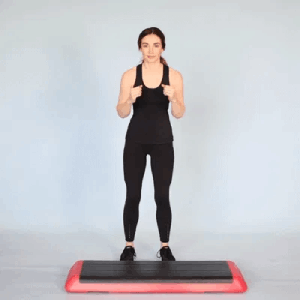
- How to: Using a low step or platform, step up with one foot followed by the other, then step down in the same sequence.
Calf Raises
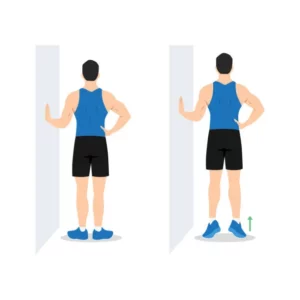
- How to: Stand upright and slowly raise your heels, pushing onto your tiptoes. Lower back down gently.
Short Arc Quads
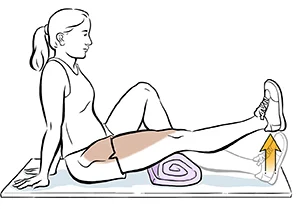
- How to: Sit with your legs stretched out. Place a rolled-up towel under one knee. Tighten your quad and lift your foot off the ground, keeping the knee on the towel. Lower down.
Knee Marching
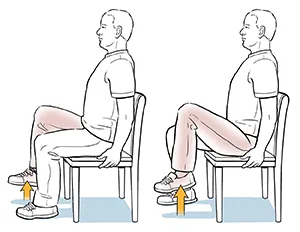
- How to: Sit on a chair, feet flat. Lift one knee as high as possible while keeping the foot flexed, then lower. Repeat with the other knee.
Before beginning any exercise, it’s essential to ensure your form is correct to prevent injury and achieve the desired results. Starting slow, listening to your body, and seeking guidance when unsure can pave the way for a pain-free and active life.
Seeking Professional Guidance: When is it Time?
While it’s true that minor discomforts can be resolved on their own, there are definitive signs that suggest the need for professional intervention. Recognizing when it’s time to seek expert advice is crucial for ensuring long-term joint health and preventing potential complications. Here are some indicators that it might be time to consult a medical professional:
- Persistent Pain: If your knee pain persists beyond a week, even after employing self-help remedies and resting, it’s time to get a professional opinion.
- Swelling: Mild swelling that subsides within 48 hours might be a result of minor injury. However, if swelling remains or reoccurs frequently, it warrants a doctor’s evaluation.
- Loss of Mobility: Difficulty in bending or straightening the knee, or a feeling of the joint “locking,” can be indicative of internal damage or misalignment.
- Noticeable Deformities: Any visible changes in the shape or structure of your knee joint, like pronounced bulging or indents, necessitate immediate attention.
- Sounds from the Knee: Occasional popping sounds aren’t typically a cause for concern. But if your knee frequently makes grinding or crunching noises, especially accompanied by pain, it could indicate cartilage damage.
Prevention Tips for the Active 20s
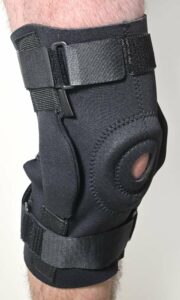
- Proper Footwear: Invest in supportive shoes tailored to your activity, ensuring they offer adequate cushioning and arch support. Remember to replace them when worn out.
- Warm-Up & Cool-Down: Begin every workout with a 10-minute warm-up to prepare your joints and muscles. Follow with a cool-down to relax and stretch.
- Avoid Overtraining: Listen to your body. Ensure you have rest days to allow muscles and joints to recover.
- Strength Training: Focus on exercises that strengthen the quadriceps and hamstrings, which support the knees.
- Maintain a Healthy Weight: Extra weight can put added stress on knees. Maintain a balanced diet and regular exercise to keep weight in check.
- Stay Hydrated: Joint cartilage requires hydration. Drink adequate water daily to support joint health.
- Proper Technique: Whether you’re lifting weights or doing cardio, ensure you’re using the correct form to prevent undue stress on the knees.
- Avoid Prolonged Sitting: If you have a desk job, take regular breaks to stretch and walk around.
- Use Protective Gear: If playing contact sports, use knee guards or braces to shield against direct blows or twists.
- Gradual Increases: If taking up a new sport or increasing exercise intensity, do so gradually to allow your body to adapt.
- Stay Mindful: Pay attention to how your body responds during and after activities. If something feels off, adjust accordingly.
By integrating these preventative measures into your daily routine, you can significantly reduce the risk of knee pain and ensure a more active, pain-free life in your 20s and beyond.
Conclusion
Navigating your 20s can be vibrant and full of energy, but unexpected knee pain can sideline even the most active individual. It’s crucial to be proactive, recognize warning signs, and implement preventative measures. Remember, you don’t have to endure the discomfort alone. If you’re battling knee pain, consider seeking expert guidance. Physical therapy for knee pain at PhysioMantra is tailored to address your specific needs and help you regain your stride. Don’t wait; book an online physical therapy session today and step into a pain-free tomorrow.

